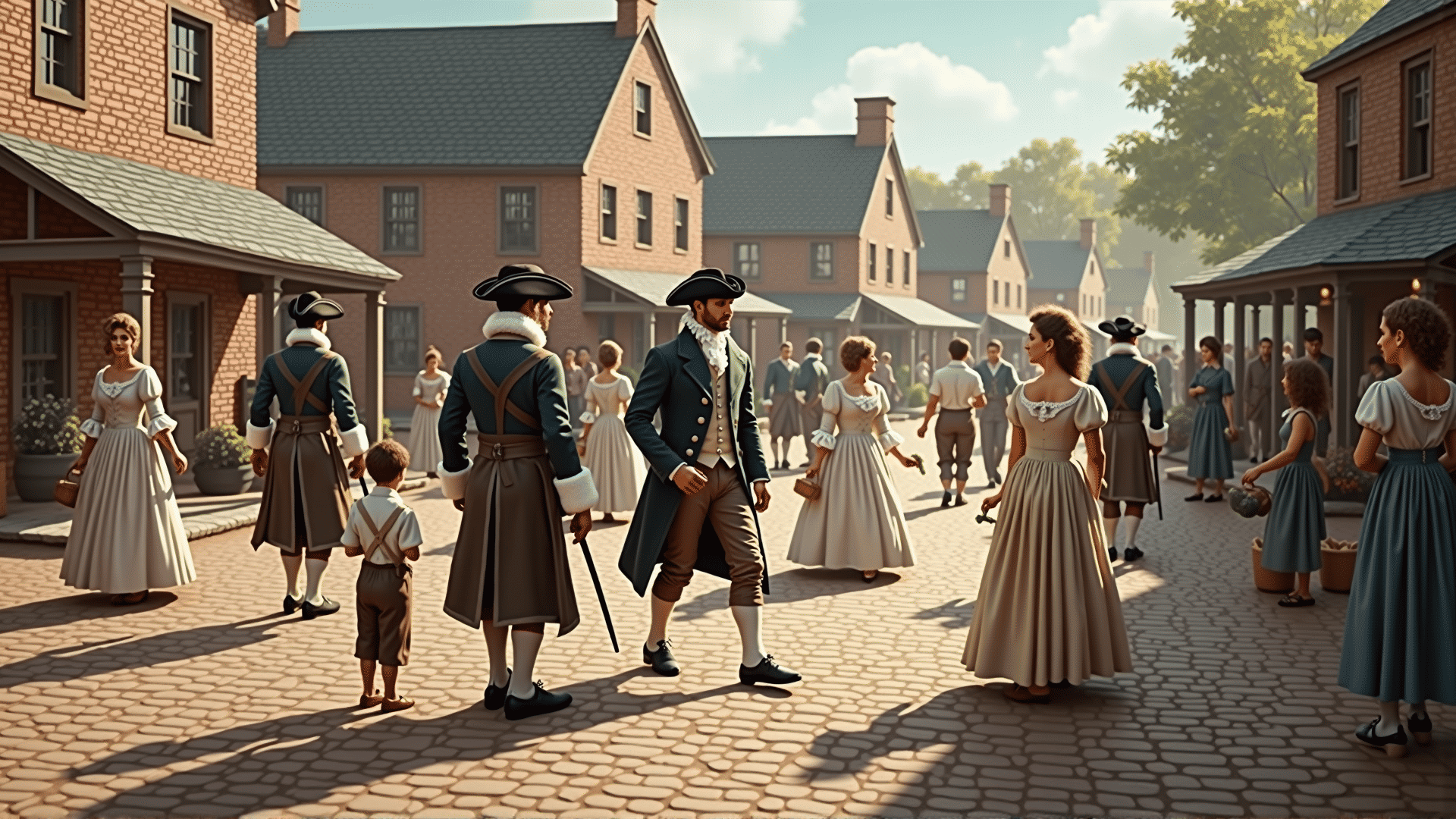During the Colonial Era, spanning the 16th to the 18th centuries, clothing styles in the American colonies were profoundly influenced by European fashions, yet they also began to reflect the burgeoning American identity. The attire of this period was a tapestry of cultural influences, social status, and practical needs that varied across regions and classes.
European Influences
The early American colonies were heavily influenced by the mother countries, particularly England, as settlers brought with them not only customs and traditions but also the styles of dress popular in Europe. Men’s clothing typically included linen shirts, waistcoats, and breeches. The waistcoat was an essential piece, often richly decorated with embroidery or made from luxurious fabrics for those who could afford it. Breeches were knee-length and paired with stockings. Jackets or coats completed the ensemble, with cut and style reflecting current European fashion trends.
Women’s attire was equally influenced by European styles. Gowns with fitted bodices and full skirts were common, often layered with petticoats. The fabrics varied, with wealthier women opting for silk and brocade, while others wore wool or linen. A key element of women’s fashion was the stay, a corset-like garment that shaped the body according to the era's ideal silhouette. Accessories such as caps, aprons, and fichus (light shawls) were often added for both modesty and flair.
Developing American Identity
While the foundation of colonial clothing was rooted in European style, the unique conditions of life in America led to modifications that began to forge a distinct American identity in dress. Practicality became a significant consideration, as the climate and working conditions demanded durability and comfort. Materials such as homespun, a sturdy fabric made from yarns spun at home, were popular among colonists who needed garments that could withstand everyday wear and tear.
Furthermore, regional variations began to emerge. In New England, the Puritan influence leaned towards simpler, more austere clothing, reflecting their values of modesty and restraint. Contrastingly, in the Southern colonies, where the economy was more reliant on agriculture and plantations, clothing could be more opulent, especially among the elite who sought to display their wealth and status.
Cultural Impact and Social Distinctions
Clothing during the Colonial Era was not merely a necessity but also a marker of social status and cultural identity. Sumptuary laws were enforced to restrict extravagance in dress and to maintain distinctions between different social classes. For instance, certain fabrics and colors were reserved for the upper classes, ensuring that clothing continued to serve as a visible indicator of one’s place in the social hierarchy.
Enslaved people during this period were often given coarse, plain garments made from inexpensive materials, which contrasted starkly with the clothing of the colonial elites. The differences in attire underscored the deeply ingrained social divisions and the harsh realities of colonial life.
Conclusion
The clothing styles of the Colonial Era were a complex blend of European influences and adaptation to the New World, reflecting both the aspirations and the realities of life in the colonies. As Americans began to carve out their identity, the evolution of dress during this period laid the groundwork for future fashion developments that would further define American culture. The attire not only kept pace with changes in taste and utility but also told the story of a society in the midst of transformation.
